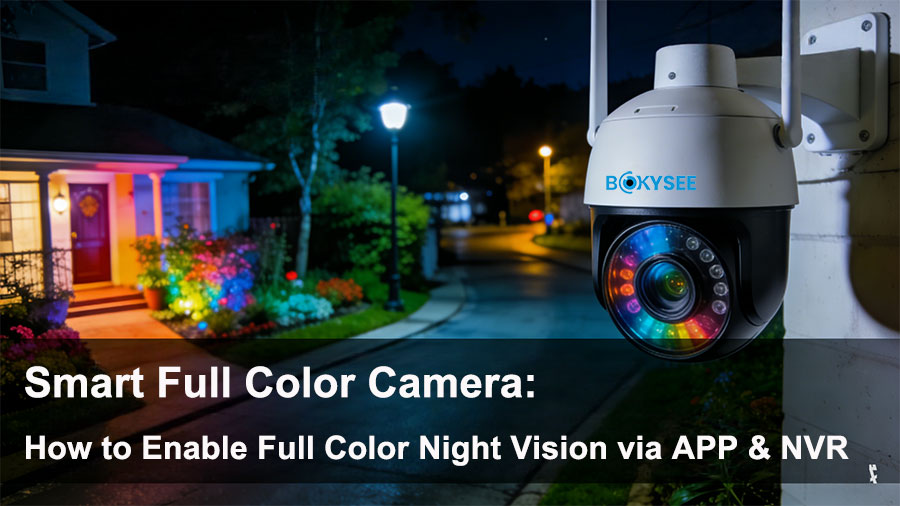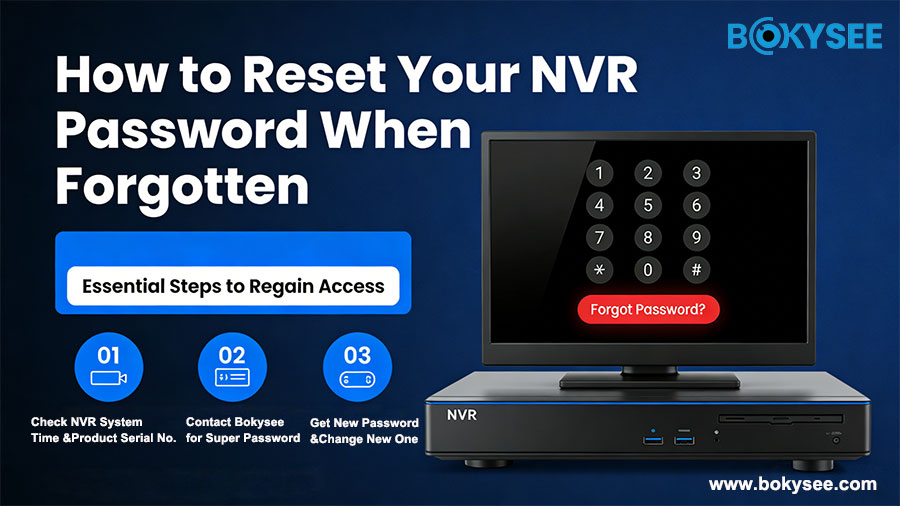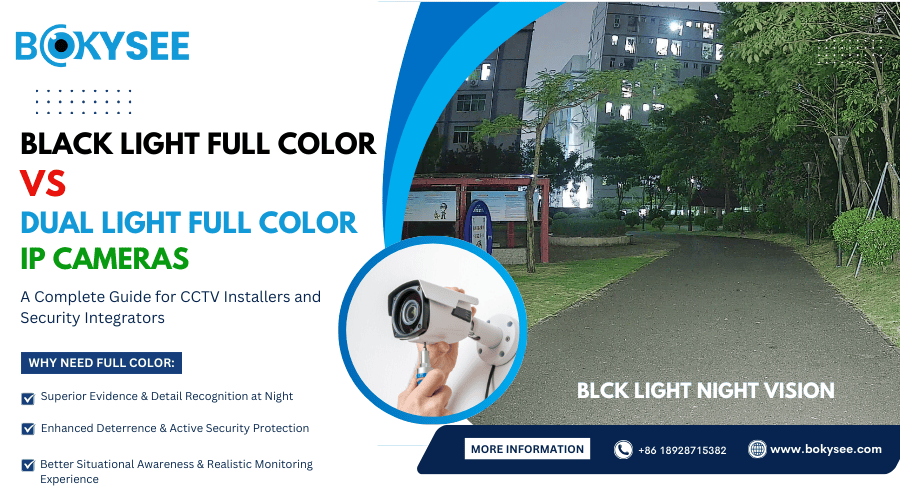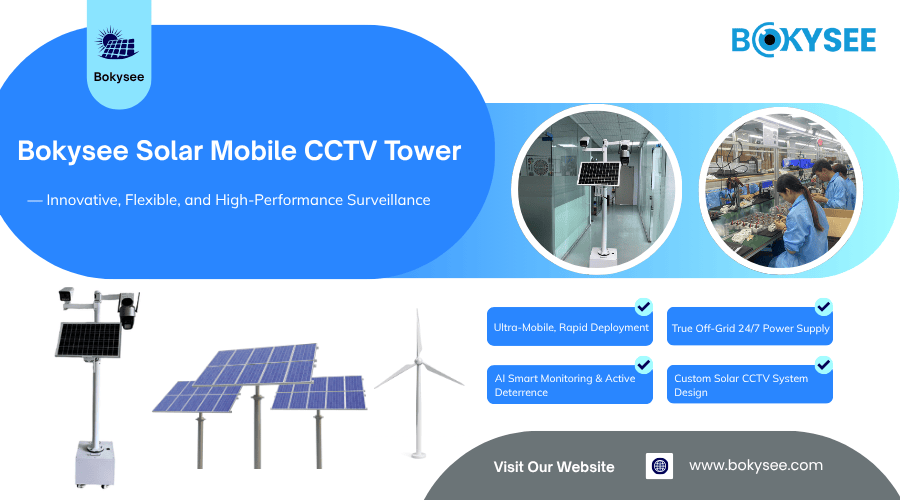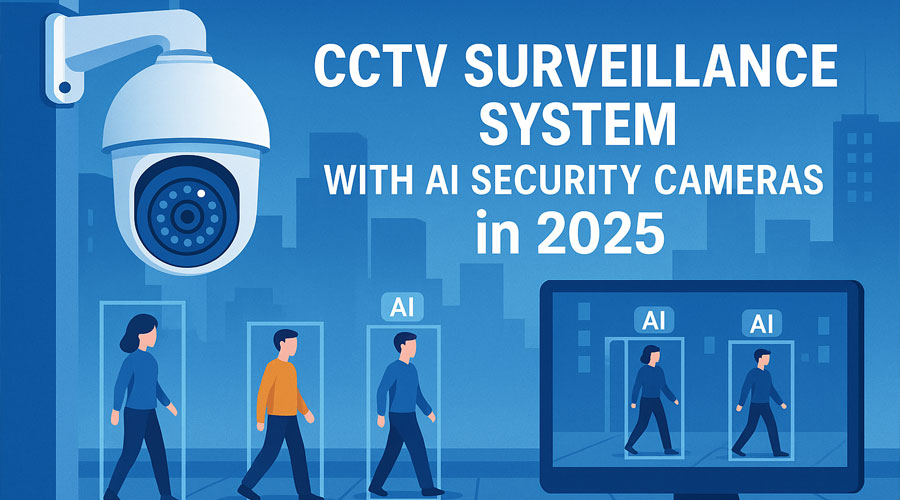
Understanding the Role of AI in Modern CCTV Systems
The integration of AI technology into CCTV systems marks a significant evolution in surveillance capabilities. Traditional cameras primarily captured footage, but with AI, real-time monitoring and threat detection have become paramount. This advancement allows for immediate identification of unusual activities, enhancing security measures dramatically. According to security expert John Doe, "AI security cameras significantly enhance surveillance capabilities and can reduce crime rates". By utilizing sophisticated algorithms, AI not only improves the accuracy of traditional methods but also transforms how we approach safety and security in various environments.
Types of AI Technologies Used in CCTV Systems
AI technologies are revolutionizing the capabilities of CCTV systems, providing enhanced security features that were previously unattainable.
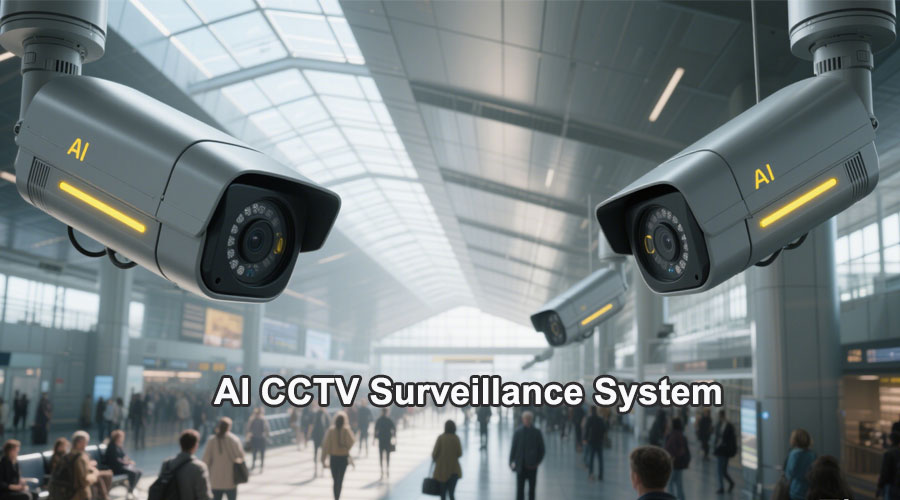
Facial Recognition Technology
Facial recognition technology is one of the most prominent advancements in AI surveillance. It significantly improves access control by identifying individuals and flagging potential security risks. When unfamiliar faces are detected, the system can send immediate alerts to security personnel, allowing for swift action to be taken.
Motion Detection Algorithms
AI-powered motion detection algorithms greatly reduce false alarms that often plague traditional systems. By intelligently differentiating between people, vehicles, and animals, these algorithms enhance monitoring effectiveness. This ensures that security teams focus only on genuine threats rather than being distracted by benign movements.
Behavioral Analysis Tools
Behavioral analysis tools further elevate the capabilities of surveillance systems by alerting security personnel to potential threats before they escalate. These tools analyze patterns and behaviors in real-time, saving time and resources by sending alerts for abnormal events that may indicate suspicious activity.
People, Vehicle & Animal Detection
Advanced detection technologies allow cameras to accurately identify and classify people, vehicles, and animals within their field of view. This capability not only enhances situational awareness but also aids in data collection for future analysis.
License Plate Recognition (LPR)
License Plate Recognition (LPR) technology enables automatic reading and logging of vehicle license plates as they pass through monitored areas. This feature is invaluable for tracking stolen vehicles or managing access control in restricted zones.
How Do AI Security Cameras Work
AI security cameras operate through a combination of advanced technologies that enhance surveillance capabilities and improve overall security.
Real-Time Data Processing
One of the key features of AI security cameras is their ability to process data in real-time. This integration allows for the immediate detection of unusual activities, which is crucial for timely intervention. Furthermore, predictive analytics can be employed to anticipate potential security risks based on observed patterns, significantly enhancing proactive measures against threats.
Object Tracking and Analysis
AI cameras are equipped with sophisticated algorithms that enable them to track and analyze moving objects within their field of view. This capability not only improves monitoring effectiveness but also allows for focused surveillance in specific areas. By continuously assessing the movement of people, vehicles, or other objects, these systems provide invaluable insights into ongoing activities and help identify suspicious behavior.
User Interaction Features
Modern AI security cameras come with user-friendly interaction features such as voice recognition technology. This allows users to engage directly with the camera system, making it easier to retrieve specific footage based on verbal commands. Such interactivity enhances user experience and ensures that critical information can be accessed quickly during emergencies.
Statistics indicate that AI-powered systems can significantly reduce dependency on human monitoring, ensuring faster responses to potential threats.
Applications of AI Security Camera
AI security cameras have a wide range of applications across various sectors, enhancing safety and operational efficiency.
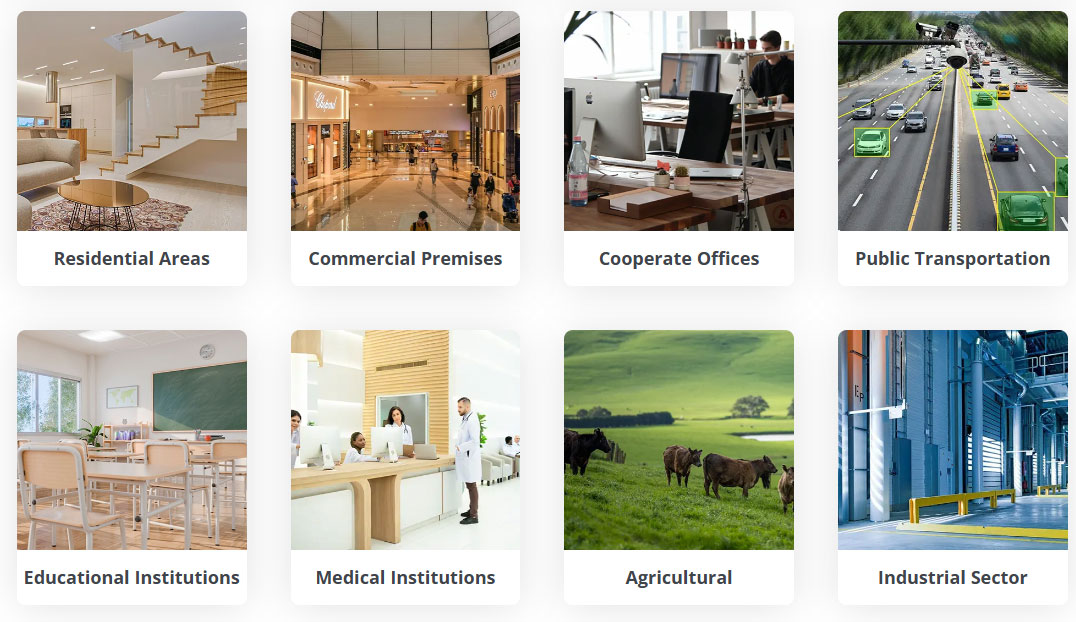
Business and Commercial Security
In retail environments, AI security cameras play a crucial role in enhancing security measures. By utilizing advanced analytics, these systems can detect suspicious behavior, significantly reducing theft and shoplifting incidents. Additionally, they improve customer safety by monitoring crowded areas and alerting staff to potential hazards or emergencies.
Home & Residential Surveillance
For homeowners, AI security cameras provide peace of mind by ensuring the safety of their property. These systems are designed to alert homeowners to unusual activities around their premises, such as unauthorized access or suspicious movements. With features like real-time notifications and remote monitoring capabilities, residents can stay informed about their home’s security status at all times.
Public Safety Monitoring
AI security cameras are increasingly used in public spaces to enhance community safety. They assist law enforcement agencies in crime prevention and investigation by providing valuable footage that can be analyzed for evidence. The ability to monitor large crowds during events or in high-traffic areas helps authorities respond quickly to incidents and maintain public order.
Smart Cities
In the context of smart cities, AI security cameras contribute significantly by monitoring traffic conditions and optimizing traffic light timings. This integration not only improves traffic flow but also enhances overall urban safety. By analyzing data from various sources, these systems help city planners make informed decisions that benefit the community as a whole.
Benefits of Integrating AI with CCTV Surveillance Systems
Integrating AI with CCTV surveillance systems offers numerous advantages that enhance security operations and overall effectiveness.
Increased Efficiency
One of the primary benefits of AI integration is the increased efficiency it brings to surveillance systems. By automating monitoring processes, AI reduces the need for constant human oversight, allowing security personnel to focus on critical tasks. This automation leads to improved response times when potential threats are detected, as alerts can be generated instantly without waiting for human intervention.
Enhanced Accuracy
AI technology significantly enhances the accuracy of surveillance systems by reducing false alarms. Traditional cameras often trigger alerts for non-threatening activities, leading to unnecessary responses and wasted resources. In contrast, AI-powered systems utilize advanced algorithms to differentiate between genuine threats and benign movements, thereby improving the reliability of security alerts. This enhanced accuracy ensures that security teams can act decisively when real risks arise.
Cost-Effectiveness
While the initial investment in AI security cameras can range from $100 to over $1000—higher than traditional models—the long-term savings they offer make them a cost-effective choice. By reducing manpower needs through automation and minimizing operational costs associated with false alarms, organizations can achieve significant financial benefits over time. The integration of AI not only enhances security but also provides a favorable return on investment by streamlining operations.
Challenges of AI Integration in CCTV Surveillance
Despite the numerous benefits of integrating AI into CCTV surveillance systems, several challenges must be addressed to ensure effective implementation.
Privacy Concerns
One of the most pressing challenges is balancing security needs with individual privacy rights. As AI surveillance systems collect vast amounts of data, concerns arise regarding how this information is used and who has access to it. Regulatory compliance issues related to data collection and storage also pose significant hurdles. Organizations must navigate complex legal frameworks to ensure they respect privacy laws while maintaining effective security measures.
Technical Limitations
Technical limitations present another challenge for AI integration in surveillance systems. The effectiveness of AI algorithms heavily depends on high-quality data; if the input data is flawed or insufficient, the performance of the system can suffer. Additionally, there is a risk of system failures or inaccuracies that could lead to missed threats or false alarms. Ensuring robust technical infrastructure and ongoing training for AI models is essential for optimal performance.
Cost of Implementation
The cost associated with implementing advanced AI systems can be a barrier for many organizations. The initial investment required for high-quality cameras and software can be substantial, potentially deterring smaller businesses from adopting these technologies. Furthermore, ongoing maintenance and updates may require additional funding, which can strain budgets over time. Organizations need to carefully evaluate their financial capabilities when considering an upgrade to AI-enhanced surveillance solutions.
Future of AI in CCTV Surveillance Systems
The future of AI in CCTV surveillance systems is poised for significant transformation, driven by technological advancements and evolving security needs.
Advancements in AI Technology
Emerging technologies are set to enhance surveillance capabilities further. Innovations such as deep learning algorithms and edge computing will enable more sophisticated threat detection, allowing systems to analyze data locally rather than relying solely on cloud processing. This shift can lead to faster response times and improved accuracy in identifying potential threats. Additionally, advancements in image recognition and natural language processing may facilitate more intuitive interactions with security systems, making them easier to use and more effective at addressing complex security challenges.
Integration with Other Security Systems
The integration of AI surveillance with other security systems is becoming increasingly important. Collaboration between CCTV cameras, alarm systems, and access control measures can create a comprehensive security ecosystem that enhances overall safety. For instance, when an AI camera detects unusual activity, it could automatically trigger alarms or lock doors, providing a coordinated response to potential threats. This interconnected approach not only improves efficiency but also allows for better resource allocation within security operations.
Global Trends in Surveillance Security
Globally, there is an increasing adoption of AI surveillance technologies as organizations recognize their value in enhancing security measures. However, this trend comes with shifts in regulations and public perception regarding privacy and surveillance practices. As governments implement stricter guidelines on data usage and collection, companies must adapt their strategies accordingly while maintaining transparency with the public about how their data is being used. This evolving landscape will shape the future direction of AI in CCTV surveillance systems significantly.
Choosing the Right Smart Security Camera from Bokysee
When selecting the ideal smart security camera, it's essential to consider your specific needs and environment.
🟢 Bokysee 4K 8MP 5-Inch 18X Wireless PTZ Camera
Choosing the Right Smart Security Camera for Wide-Area AI Monitoring
If your surveillance needs cover large outdoor spaces, such as parking lots, commercial plazas, or industrial zones, the Bokysee 4K 8MP PTZ camera is a top-tier choice. Equipped with 18X optical zoom and AI-based human and vehicle detection, it enables security teams to track movements in real time with exceptional clarity.
✅ Why it’s ideal:
-
Ultra HD 4K resolution ensures forensic-level detail.
-
Pan-Tilt-Zoom with cruise presets covers more ground than fixed-angle units.
-
AI algorithm intelligently detects and distinguishes humans and vehicles.
-
Compatible with Hikvision & Dahua NVRs via ONVIF protocol.
Best For: Logistics parks, airports, campuses, border security.
🔗 View Product on Bokysee.com »
🔵 Bokysee 6MP Dual-Lens 36X Zoom Smart PTZ Camera
Choosing the Right Smart Security Camera for Multi-Angle Intelligent Tracking
In areas where both wide-angle surveillance and zoomed-in detail are required—such as gated communities, urban intersections, or building entrances—this dual-lens PTZ camera shines. Its intelligent AI system uses both lenses in tandem to deliver comprehensive surveillance footage.
✅ Why it’s ideal:
-
Dual-lens architecture enables simultaneous panoramic and zoomed viewing.
-
36X zoom with smart AI tracking keeps targets in focus, even at a distance.
-
Auto-tracking and human detection enhance event accuracy and reduce false alarms.
-
Built-in horn and optional voice alerts enable active deterrence.
Best For: Entrance gates, school perimeters, retail complexes.
🔗 View Product on Bokysee.com »
🟣 3. Bokysee Solar WiFi Security Camera Kit with 10-Inch Display
Choosing the Right Smart Security Camera for Remote and Off-Grid Locations
For off-grid monitoring scenarios like construction sites, farms, border zones, or temporary setups, this solar-powered camera kit delivers reliability and intelligence without external infrastructure. It includes a 10-inch display, built-in 18650 lithium batteries, and AI human detection for efficient management in remote areas.
✅ Why it’s ideal:
-
Solar + battery-powered system means 100% off-grid operation.
-
AI-based humanoid detection filters out irrelevant motion and focuses on threats.
-
10-channel NVR with wireless card allows for centralized live monitoring.
-
Supports SD card and cloud recording, keeping data safe and accessible.
Best For: Remote warehouses, outdoor farms, infrastructure sites, or temporary installations.
🔗 View Product on Bokysee.com »
See Also
Advanced AI Surveillance Solutions for Today's Businesses
Incorporating AI Analytics into Business CCTV Solutions
Emerging IP Camera Innovations Shaping 2025 Surveillance


